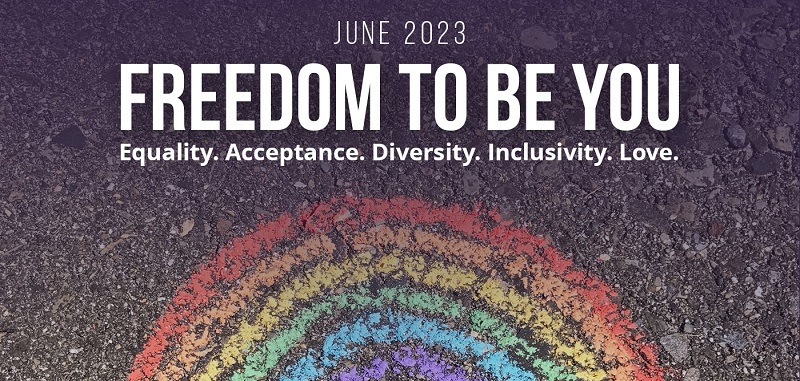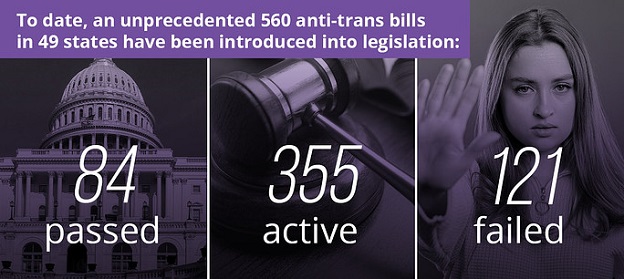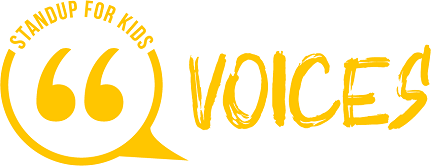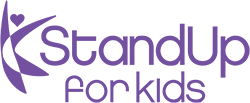

This is what Pride Month is all about. It’s a time for the LGBTQIA+ community to celebrate who they are, who they love, their shared history, achievements and place in the world. People march in pride and solidarity. Parties and gatherings celebrate the diversity of sexual orientations and gender identities. Brands infuse their messaging with support. Rainbows are everywhere. Back in 1999, President Clinton declared June as Gay & Lesbian Pride Month, building off of the subsequent liberation marches held each year after the June 28, 1969 police raid of the Stonewall Inn, a gay club in New York City. The ensuing riots on that infamous day, protesting police harassment and discrimination, marked a key moment in the gay rights movement.
Much Progress Made, More Struggles Continue
The last few decades have seen strides made for lesbian, gay, bisexual, and transgender Americans in the fight against discrimination and abuse at work, school, home, and in their communities. Pride Month is a great reminder of how far we’ve come – and how far we still have to go. As strong and vibrant as this community is, it still faces many hurdles and challenges – especially its transgender population.


These bills seek to block access for this vulnerable and marginalized community to healthcare, student athletics, the military, incarceration, and education, including the removal of LGBTQ+ materials from schools. Where does all this “anti” messaging from politicians, the media and others leave our kids? It’s affecting their mental health. They’re fearful for their lives. They’re moving to more welcoming states, seeking out help, and struggling more than ever.
Every Step of the Way, Life is Harder on the Streets
Youth end up on the streets for many reasons. Being kicked out of home for being gay or choosing to run away because staying is untenable can be devastating.

• Nearly 40% of homeless youth identify as LGBTQIA+
– Housing instability impacts LGBTQIA+ youth of color at even higher rates
• 1-in-5 transgender people has experienced homelessness due to family rejection, discrimination and violence (National Center for Transgender Equality)
• When compared to housed LGBTQIA+ youth, homeless LGBTQIA+ youth are:
• 2.07x more likely to experience depression
• 1.96x more likely to experience anxiety
• 2.3x more likely to self-harm
• 2.6x more likely to consider suicide
• Difficult to maintain recovery
• 3.7x more likely to attempt suicide
Source: The Trevor Project

“When someone hears “trans people,” so many folks hear the “trans” part and forget that we, too, are people, and deserve to be safe.”
– Kaine, StandUp for Kids Youth, Silicon Valley chapter

Every homeless and at-risk youth deserves a safe place to be themselves. Every single day, and especially during #PrideMonth, we’re proud to stand beside our kids and teens. We honor and respect their uniqueness and give them the support they need:
- We help youth develop positive relationships with our mentors andvolunteers who offer guidance, understanding and acceptance
- We practice inclusiveness of all sexual orientations and gender identities ateach of our chapters
- We connect youth with resources and services, including food, clothing andhygiene products, medical, mental health and dental needs, getting IDs and other documentation, and housing application assistance
- We offer a monthly “YOU” LGBTQIA+ Youth Night, open to ages 12-18, atour Hampton Roads chapter in Virginia. They get the word out through flyers (You are Loved. You are Smart. You Matter.), social media, school guidance counselors, and the youth just telling others how awesome the meetings are.
“We try to bring in special guests who identify to show these kids that you can be anything you want to be.”
– Nicole Pixler, Co-Executive Director, Hampton Roads
Take a Positive Stand
LGBTQIA+ youth deserve equal freedom to be themselves in the world. Until that happens, we will keep fighting for a more just, inclusive society. You can help, too. Reach out to your state and local representatives to continue to raise your awareness, volunteer your time, or become an advocate for LGBTQ+ rights and equality.
Together, Let’s Empower LGBTQIA+ Homeless Youth to Thrive
“But the sad reality is that after the Pride parades are over and after the bars close their Pride nights and the glitter is being swept out of the streets, a lot of people get on those trains and they get on those buses and they try to wash the rainbows off their bodies. And they peel the stickers off their clothes. Because when Pride is over, it’s not safe to be gay anymore. Because they are worried that someone is going to viciously assault them.”
– Pop Star Halsey, she/they, bisexual icon, LGBTQIA+ rights advocate, formerly homeless youth
